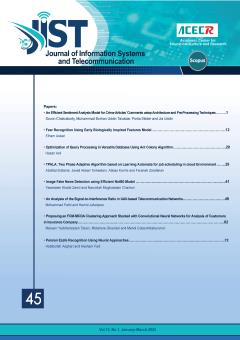To support high bisection bandwidth for communication intensive applications in the cloud computing environment, data center networks usually offer a wide variety of paths. However, optimal utilization of this facility has always been a critical challenge in a data cent
More
To support high bisection bandwidth for communication intensive applications in the cloud computing environment, data center networks usually offer a wide variety of paths. However, optimal utilization of this facility has always been a critical challenge in a data center design. Flow-based mechanisms usually suffer from collision between elephant flows; while, packet-based mechanisms encounter packet re-ordering phenomenon. Both of these challenges lead to severe performance degradation in a data center network. To address these problems, in this paper, we propose an efficient mechanism for the flow scheduling problem in cloud data center networks. The proposed mechanism, on one hand, makes decisions per flow, thus preventing the necessity for rearrangement of packets. On the other hand, thanks do SDN technology and utilizing bidirectional search algorithm, our proposed method is able to distribute elephant flows across the entire network smoothly and with a high speed. Simulation results confirm the outperformance of our proposed method with the comparison of state-of-the-art algorithms under different traffic patterns. In particular, compared to the second-best result, the proposed mechanism provides about 20% higher throughput for random traffic pattern. In addition, with regard to flow completion time, the percentage of improvement is 12% for random traffic pattern
Manuscript profile


